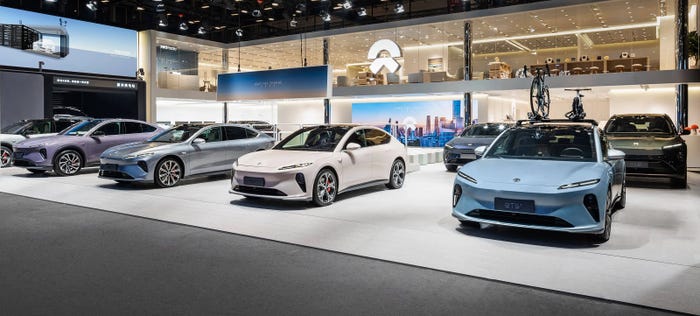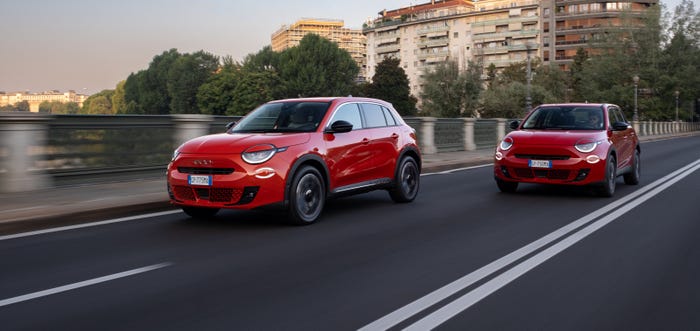Honda 3L SOHC V-6
There’s probably no better measure of engine-development progress than a contemporary automotive V-6. When Ward's launched the 10 Best Engines competition a decade ago, V-6s were only beginning to account for a meaningful portion of sales in middle-market vehicles particularly for imported nameplates and power levels were unassuming. Here are the power/torque ratings for the four V-6s that won Best
December 30, 2003


There’s probably no better measure of engine-development progress than a contemporary automotive V-6.
When Ward's launched the 10 Best Engines competition a decade ago, V-6s were only beginning to account for a meaningful portion of sales in middle-market vehicles – particularly for imported nameplates – and power levels were unassuming. Here are the power/torque ratings for the four V-6s that won Best Engines awards in 1995: Ford Duratec 2.5L, 170 hp/165 lb.-ft.; GM 3.8L, 205 hp/230 lb.-ft.; Mazda 2.3L Miller-cycle, 210 hp, 210 lb.-ft.; Nissan 3L, 190 hp/205 lb.-ft.
And in 1995, Honda Motor Co. Ltd. had yet to launch its first V-6. Now, 10 years later, Honda’s scorching 3L SOHC V-6, winning a 10 Best spot for a second consecutive year, develops 50 hp more than a same-displacement competitor from a decade ago. Almost 30% increased horsepower, along with better fuel economy and reduced emissions, seems to be genuine progress.
Power density chief attribute for Honda 3L V-6. |
Credit much of the last decade’s power explosion to variable valve timing, a technology that’s been singularly responsible for some whopping horsepower and driveability gains in everything from the smallest 4-cyl. to hulking V-8s. So when Honda engineers got the bug to bring their previously sleepy 3L V-6 to world-class levels of specific output, it was only natural to go straight to the company’s seminal VTEC (Variable valve Timing and lift Electronic Control), the variable valve-timing system that made its contemporary 4-cyl. engines renowned.
For the 3L SOHC V-6, VTEC employs three camshaft lobes for each cylinder’s two intake valves. At low and midrange rpm, each valve is opened by a dedicated rocker arm following a cam lobe that maximizes cylinder mixture, enhancing torque and fuel economy.
But when high-rpm power is required, the engine management system signals a spool valve to lock the two rocker arms to a third rocker located between the two normal-operation rockers. The middle rocker arm, which “freewheels” at low- and mid-range rpm, follows a cam lobe that optimizes high-rpm power production. When the three rockers are locked together, the intake valves open according to the aggressive cam profile.
It’s obvious what the VTEC system does for power production – Honda’s new 3L has better specific output than all but the most-potent variants of Nissan’s 3.5L V-6, which for a decade has stood as the industry’s unparalleled V-6 benchmark. And nobody knows if Honda engineers intended it, but when the VTEC engines “switch” the high-rpm cam profile, the now-signature VTEC “wail” is absolutely symphonic.
At 80 hp/L, we don’t know where V-6s will go from here, but it’s likely Honda, for years focused mainly on its beloved 4-cyl. designs, will be leading the charge.
3L SOHC V-6
Engine type | 3L 60-degree SOHC V-6 |
Displacement (cc) | 2,997 |
Block/head material | aluminum/aluminum |
Bore x stroke (mm) | 86 x 86 |
Horsepower (SAE net) | 240 @ 6,250 rpm |
Torque | 212 lb.-ft. (287 Nm) @ 5,000 rpm |
Specific output | 80 hp/L |
Compression ratio | 10:1 |
Application tested | Accord Coupe 6-speed |
Fuel economyfor tested vehicle(EPA city/hwy. mpg) | 20/30 |
Read more about:
2004 10 Best EnginesAbout the Author(s)
You May Also Like



